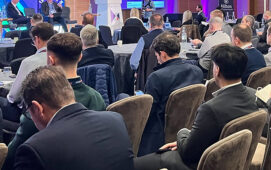It’s a new year, and it brings with it new questions from the IntelligentTradingTechnology.com community …
Q: What does the potential acquisition of NYSE Euronext by IntercontinentalExchange mean for the exchange group’s NYSE Technologies unit?
A: Ah, an easy one to begin 🙂 Well, it’s going to take a few months for the transaction to close, assuming it does. Then I expect the first order of business is spinning off the European stock exchanges, as is the plan. So I would expect it to be around this time next year that the future of NYSE Technologies will be seriously considered (though the rumours have already begun of course).
ICE CEO Jeffrey Sprecher was on CNBC last week and he noted that NYSE has a good technology services business (meaning NYSE Technologies) so he knows it exists, and has some positive vibes towards it.
I suspect that at some point, the new senior management of the combined ICE/NYSE will drill down into the commercial performance of NYSE Technologies and make some very pragmatic decisions. The options vary from keep it as is and grow it as the economy recovers, sell off some parts of it that are not core/performing, spin it out, or merge it with some third party. Who knows … for now at least.
It’s worth noting that NYSE Technologies CEO Jon Robson – installed last September – is very much a deal maker, much more than he is an operations man. I suspect he is onboard not simply to run it as is. Also noteworthy is that Robson just hired his former Thomson Reuters colleague Terry Roche to be COO.
That’s a long answer. The short one is. Watch this space, as it’s gonna get interesting!
Q: Where is going to be the low-latency action in 2013?
A: I’ll mention three areas … Hosting and managed services (some call it cloud) will become more widely used, in part to reduce costs, and partly as they can provide a platform to trade new asset classes and geographies.
There will also continue to be new connectivity rolled out, both fibre and wireless, to speed up connections, and also to enter new markets, such as in Russia, Asia and Latin America.
Finally, I expect to be a continued debate on how to boost application performance, with advances in mainstream x86 architectures on one side, and improved programmability of FPGAs on the other.
Q: What about low latency and big data convergence?
A: It’s happening more and more. More trading firms are turning to time series databases to drive quantitative trading or to determine transacton cost analysis. In a different area, trading driven by news sentiment and twitter and social media updates is on the increase. So it’s specialised technologies at play – out of the big data norm – but it’s happening for sure.
Subscribe to our newsletter




